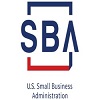510(k): How to evaluate the needs for medical device compliance?
05/07/2020
Category: Other Blogs
The techniques and methods used in device evaluations depend on the type of specific product. Devices are diverse in nature in components as well as the health issues they are made to help with the patients’ quality of life. The type of technology involved can be simple, such as gauze, or complex, such as an implant with software transmitted data.
Regarding the time and requirements for marketing a 510(k) device in the U.S., it is appropriate to find answers to these type questions with medical device expert consulting, since the devices are quite variable in regulatory documentation.
Also Read: Overview of FDA US Agent
What is a 510(k)?
The 510(k), or premarket notification, is the procedure that the FDA requests from manufacturers of medical devices for marketing as substantially equivalent to other devices on the market. The 510(k) mechanism is different from the pre-market approval application (PMA). When the FDA reviews the device 510(k) submission and finds it to be marketable, FDA gives it ‘clearance.’
The 510(k) clearance is based on the successful demonstration of substantial equivalence (SE) between the medical device reviewed by FDA and at least one medical device with the same intended use and similar technical characteristics (called a predicate device) already in the U.S. marketplace. The 510k medical device must be given an order from FDA of the SE before the sponsor can market the product.
There are ‘exempt’, Class I, II and III, de novo applications, pre-sub meetings and routine testing associated with different 510(k) devices. An FDA expert with device experience, such as those in the Biotech Research Group, will be able to identify the best pathways for potentially the quickest marketing success of a device product.
tagging: FDA consultant medical device > medical device expert


